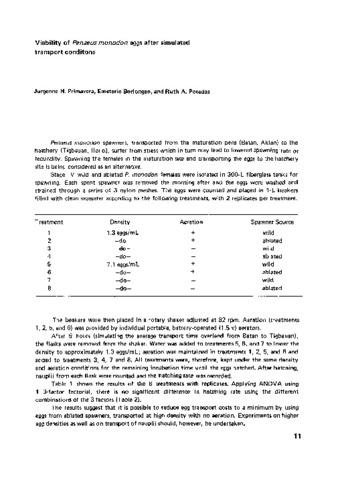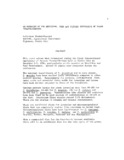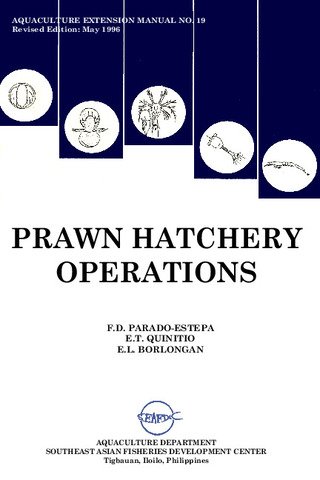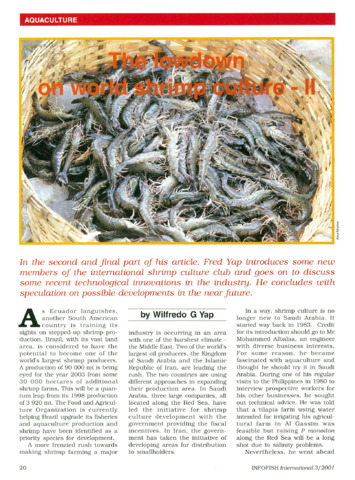Viability of Penaeus monodon eggs after simulated transport conditions
- Global styles
- MLA
- Vancouver
- Elsevier - Harvard
- APA
- Help

Date
1977Page views
10,705ASFA keyword
AGROVOC keyword
Taxonomic term
Metadata
Show full item record
Share
Abstract
P. monodon spawners, transported from maturation pens suffer from stress which in turn may lead to lowered spawning rate or fertility. Spawning the females in the maturation site and transporting the eggs to the hatchery site is being considered as an alternative. Egg transport costs may be reduced to a minimum by using eggs from ablated spawners, transported at high density with no aeration. Experiments on higher egg densities as well as on transport of nauplii should, however, be undertaken.
Suggested Citation
Primavera, J., Borlongan, E. L., & Posadas, R. A. (1977). Viability of Penaeus monodon eggs after simulated transport conditions. SEAFDEC Aquaculture Department Quarterly Research Report , 1(4), 11-13. http://hdl.handle.net/10862/2305
Type
ArticleCollections
Related items
Showing items related by title, author, creator and subject.
-
An overview of the nutrition, feed and feeding techniques of prawn penaeid/shrimps
Piedad-Pascual, Felicitas (Philippine Council for Aquatic and Marine Research and Development, 1989)This paper echoes what transpired during the first International Conference of Penaeid Prawns/Shrimps held in Iloilo City in December 4-7, 1984, particularly on the Nutrition nd Feed Development. Around 25 papers were ... -
Series: Aquaculture extension manual; No. 19
Prawn hatchery operations
Parado-Estepa, Fe D.; Quinitio, Emilia T. ; Borlongan, Emeterio L. (Aquaculture Department, Southeast Asian Fisheries Development Center, 1996-05)
The manual, an updated version of the 1984 SEAFDEC/AQD manual, presents the underlying principles and step-by-step instructions of prawn larval and post-larval rearing. The techniques described are not only applicable to ...
; Borlongan, Emeterio L. (Aquaculture Department, Southeast Asian Fisheries Development Center, 1996-05)
The manual, an updated version of the 1984 SEAFDEC/AQD manual, presents the underlying principles and step-by-step instructions of prawn larval and post-larval rearing. The techniques described are not only applicable to ... -
The lowdown on world shrimp culture - II
Yap, Wilfredo G. (INFOFISH, 2001)This paper introduces some new members of the international shrimp culture club and goes on to discuss some recent technological innovations in the industry, particularly the polyculture of tilapia (mainly Oreochromis ...






